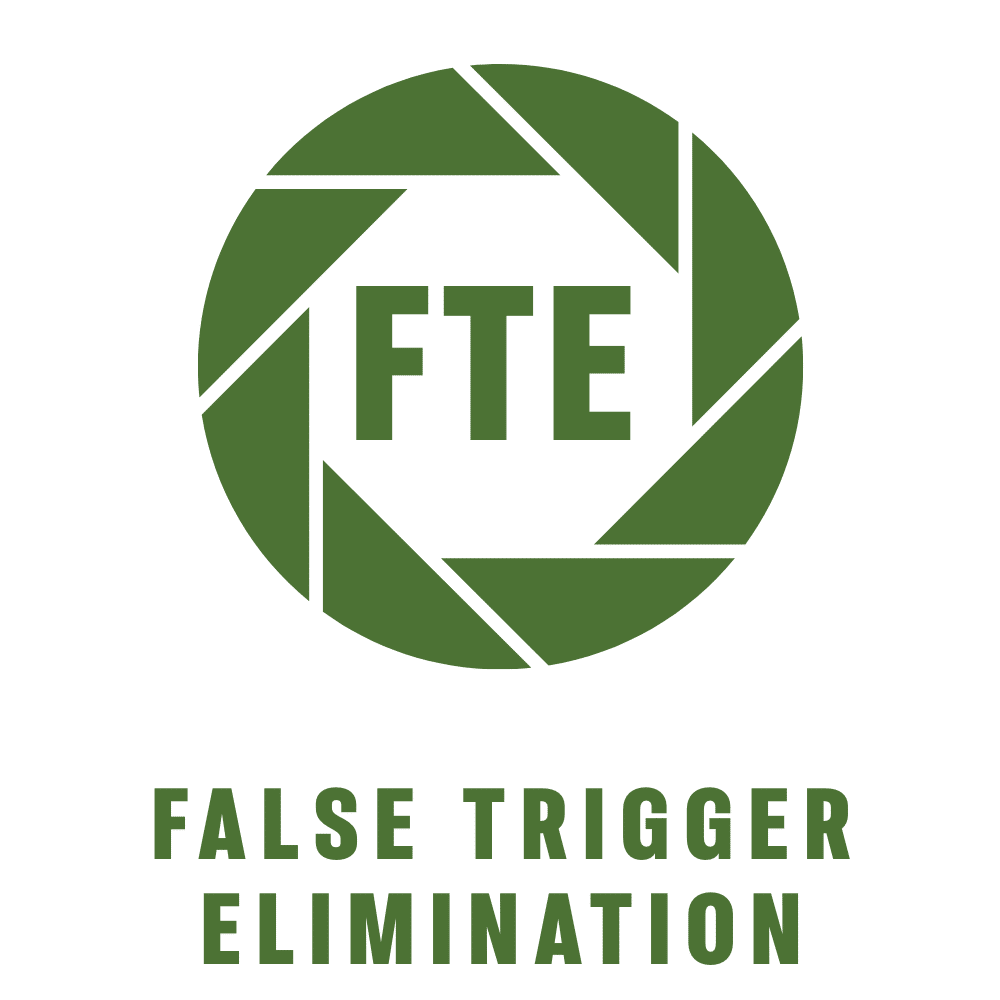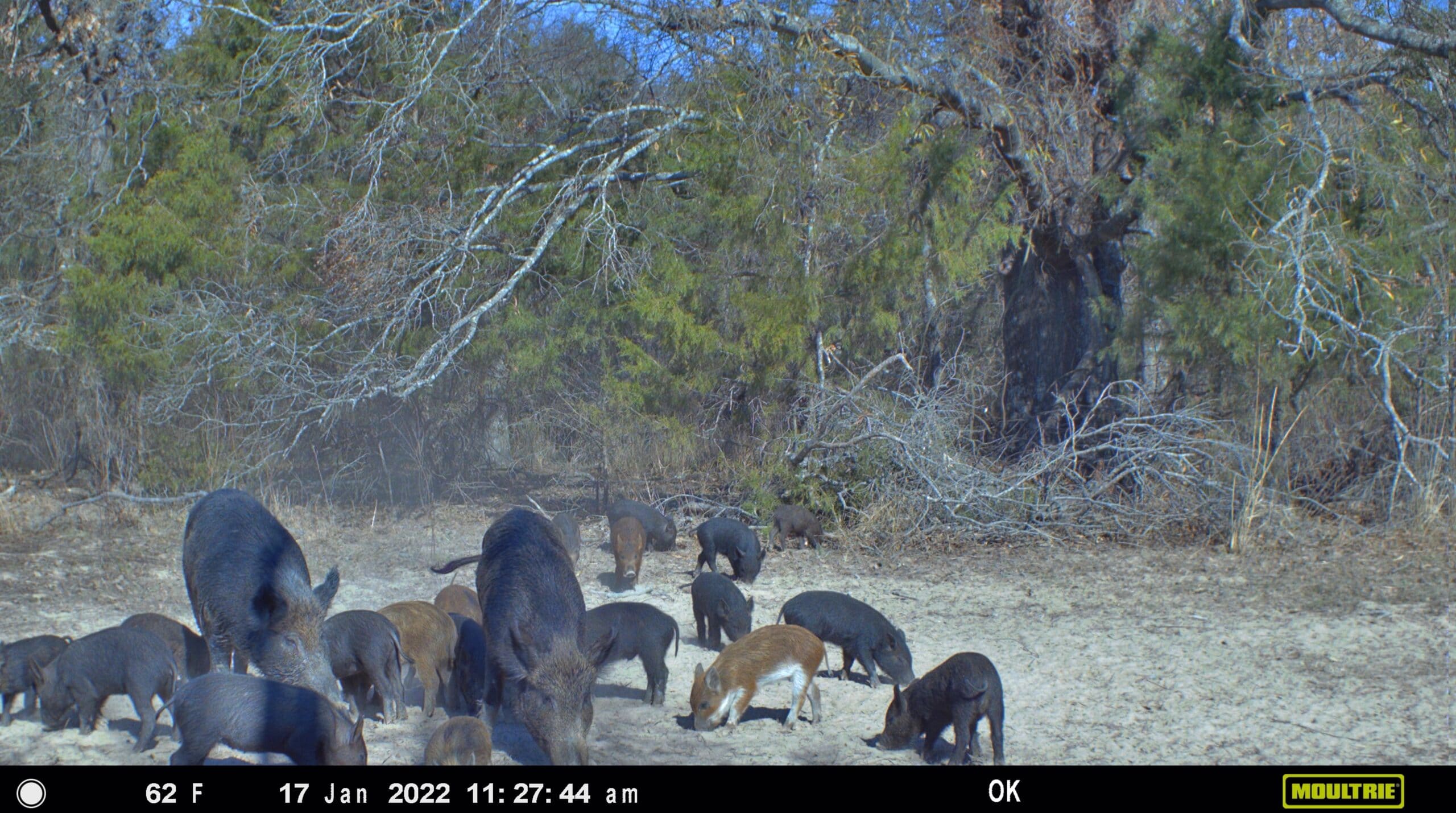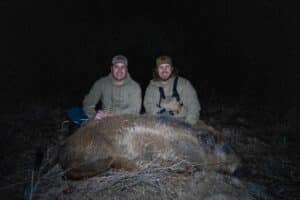How To Hunt Hogs With Cellular Trail Cameras
Feral hogs are destructive, invasive, and wreaking havoc for farmers and native wildlife all over the country. But they are also super fun to hunt and quite delicious to eat! That’s why we reached out to our good friends, K.C. Smith and Tyler Jones of The Element, who have been using Moultrie Mobile cellular cameras during the offseason to target and stalk hogs with their bows. Here’s the lowdown on how to kill more hogs using cellular trail cameras.
Scent Control
“Pigs are smarter than deer,” said Jones. “The way they beat you is with their nose. Cell cams are a great way to check on pigs without having to go into an area and check SD cards. If you get busted by pigs one or two times, they might not leave the area, but they will go nocturnal.”
Finding Daylight Hogs
Jones also likes the cell cams because they can pinpoint hogs that are feeding in the daylight, which is important to him. “K.C. and I are dads with families,” explains Jones. “We can’t stay up all night using thermal to target pigs.”
With busy schedules, cell cams help them decide exactly what spots to hunt so that they can make the most of their time afield.
Use Bait
The best way to locate hogs and to get them coming in is to use bait. “It’s legal to bait hogs in most states,” says K.C. Smith. “You want to put corn on the ground.”
Smith says that they like to create three or four bait stations on a property to locate the hogs. They place a cellular trail camera on each bait site to then monitor which area is getting hit the best. They are also looking for which site has daylight action to target first.
Camera Placement
Both Jones and Smith stressed that hogs are shorter than deer, which means that the camera needs to be positioned lower or angled down more. “Make sure that the cameras aren’t pointed at grass and trees,” said Jones. With the camera being lower to the ground there is a greater chance of blowing grass and limbs to cause false triggers.
They also said it’s important not to point cameras east or west, because the sunrise and sunset will whiteout the picture. This is important when trying to locate daylight hogs, since early mornings and late afternoons are prime times for hog movement.
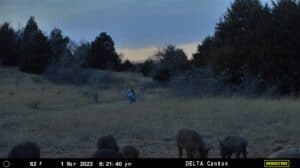
“If you position the cameras looking at the bait and the direction you’re hunting from, you can get some cool shots of the stalk, too,” said Smith.
Camera Settings
If you live near your cameras and you can make a move at the drop of a dime, then keep your cameras on immediate mode, along with notifications turned on. This way you will get an alert when hogs are at your bait sites, and you can head that way.
It’s also important to use the delay setting for a minute or longer when using bait. The hogs will stay in the area for a long time and continue coming back once the bait is gone. Without the delay mode set you’ll get tons of redundant images of pigs. “You just want to know when the hogs are there,” said Jones. “It’s not like deer where you are looking for a specific buck. You don’t care how big they are.”
It’s also important to choose the best cell carrier for the area you’re hunting. Hogs love low-lying areas and bottoms, which isn’t always the best place for cellular coverage. Choosing the best carrier will ensure you get a strong signal.
Use Hog Smart Tags
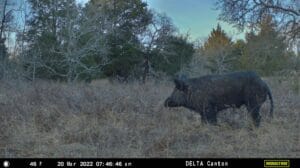
The Moultrie Mobile app has species-recognition software that will detect hogs in images. Use the Hogs Smart Tag to quickly scan through your images for hogs only. This keeps you from scanning through a bunch of deer and raccoon images.
Hunting Tips
- Aim more forward on pigs. Don’t aim back. Their heart is farther forward, and you want to hit it and the lungs, especially when bowhunting. A wounded hog can go a long ways without a good shot.
- Hogs aren’t known for good eyesight. However, use cover when stalking a sounder of pigs. With all those eyes looking around they can still pick you off in the wide open.
- Shoot big pigs first to get multiple shots. Smaller hogs will be confused momentarily allowing for additional shots.
- Learn to make a hog squeal with your mouth and always squeal after the shot. Typically, one or more of the hogs will stop to find out where the danger is coming from — giving you an extra shot opportunity.


Featured
Juicy homemade jalapeno cheddar brats are perfect for grilling all summer long. They’re packed with all the right seasonings and fresh ingredients, making them extra tasty.

Featured
MeatEater and Moultrie Mobile join teams to bring hunters closer to nature.

Featured
These wild turkey skewers are tender and smothered in a homemade teriyaki glaze. Wild turkey sometimes gets a bad reputation for being a tough meat but when prepared properly using the steps in this recipe, the results are amazing.

